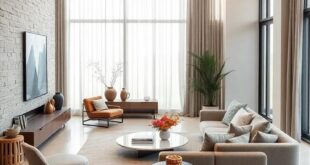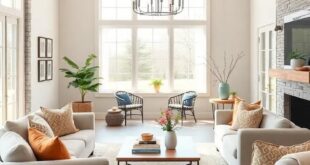In an age where urban living often comes with the challenge of limited space, the small living room has become a canvas for innovation and creativity.The art of maximizing space is not just about fitting furniture into a confined area; it’s about creating an inviting atmosphere that seamlessly blends functionality with aesthetics. Imagine a cozy retreat that effortlessly transitions from a lounging area to a dining space, harmonizing everyday living with gatherings and meals. In this article, we will explore clever design strategies and creative tips for transforming a compact living room into a multifunctional haven, complete with a dining area and a stylish sideboard. Join us as we unlock the potential of every square inch, proving that small spaces can be both delightful and practical.
Crafting a Multi-Functional Haven in Your Cozy Living room
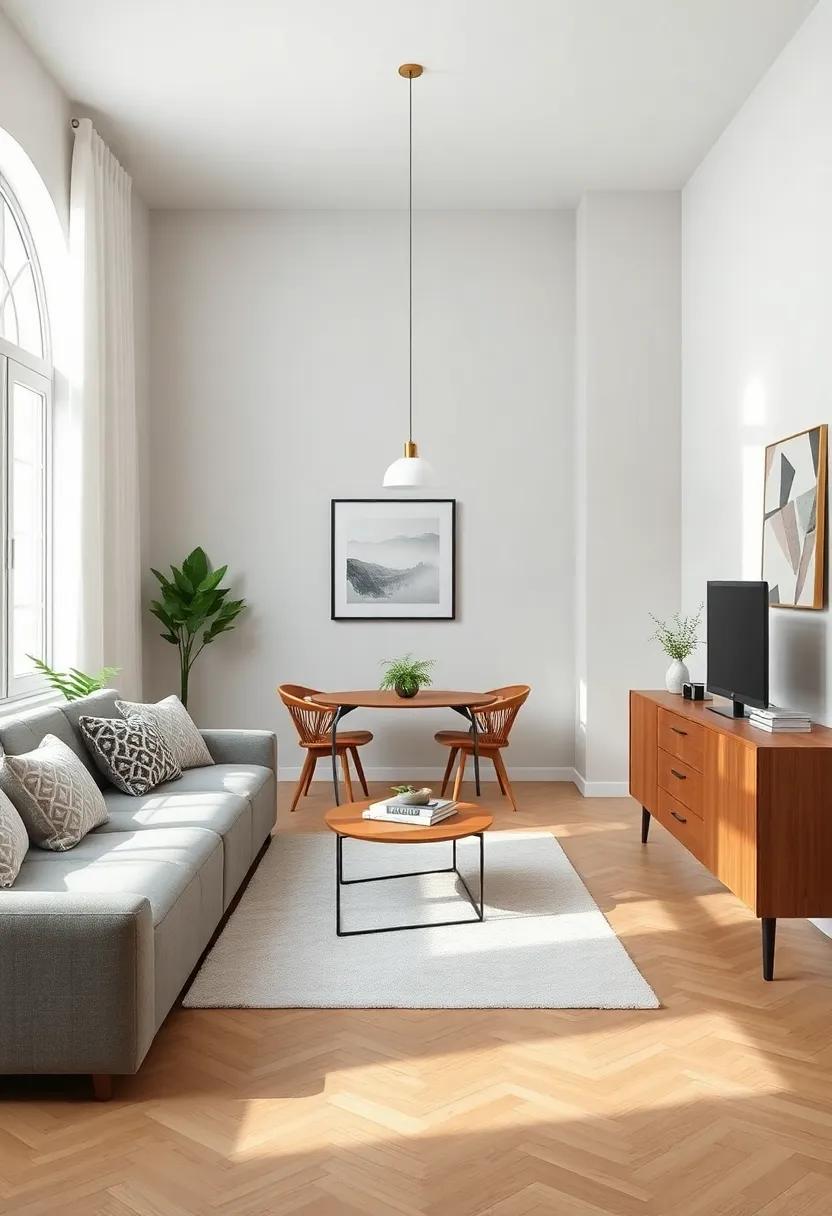
Creating a multi-functional haven in your cozy living room involves thoughtful arrangement and design choices that promote both comfort and utility. To seamlessly integrate a dining area and sideboard into your space,consider using compact and convertible furniture that can adapt to different needs. Transform a sturdy coffee table into a dining surface or opt for nesting tables that tuck away when not in use. A strategically placed sideboard can serve as both storage and display space,allowing you to showcase decorative items while keeping essentials tucked away. Placing this piece against a wall or beneath a window maximizes floor area while adding character to the room.
Utilizing colors and layouts that create an illusion of more space can greatly enhance the ambiance of your living area. Light and neutral shades on walls help reflect light,making the room feel airy and open.Additionally, implementing vertical storage solutions—such as shelves that reach the ceiling—draws the eye upwards and gives the impression of increased height. Furnishing with slim-profile chairs or benches around the dining table can also maintain a sense of flow throughout the area. Here’s a simple table to illustrate a few stylish elements you might incorporate:
| Furniture Element | Functionality | Style Tip |
|---|---|---|
| Convertible Coffee Table | Doubles as a dining surface | Choose a design with storage underneath |
| Sideboard | Storage and display | Opt for a mirrored finish to reflect light |
| Compact Dining Set | Dining area without sacrificing space | Furniture with foldable options is ideal |
Embracing Vertical Space for a Roomier Feel
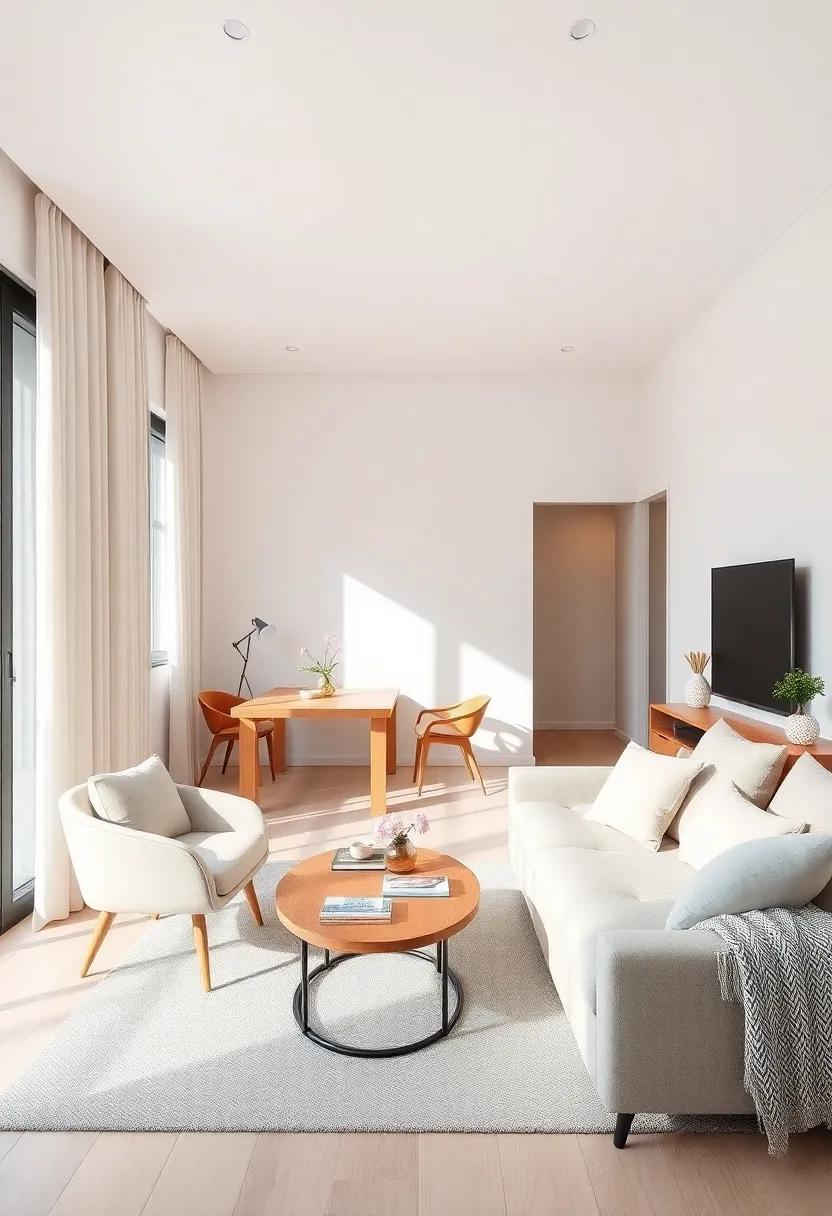
To create an illusion of space in a small living room, embracing verticality can be a game changer. Start by utilizing wall space to incorporate shelves and storage solutions that draw the eye upward. Consider floating shelves or tall bookshelves that reach the ceiling.By doing so, you not only free up floor space but also provide ample room for personal touches such as plants, books, and decorative items.When placed strategically, these vertical elements can guide the gaze upward, making the room feel taller and more expansive.
in addition, think about your wall color and decor choices. Light and neutral tones can enhance the vertical feel, while mirrors can serve as reflective surfaces to amplify the sensation of openness. A well-placed mirror opposite a window can amplify natural light, contributing to a brighter atmosphere. Consider these ideas to enhance the vertical space in your small living area:
- Install open shelving units
- Use tall plants to add height
- Incorporate artwork that draws the eye upward
- Choose vertical furniture pieces, like tall sideboards
Choosing the Right Color Palette to Create an Inviting Atmosphere
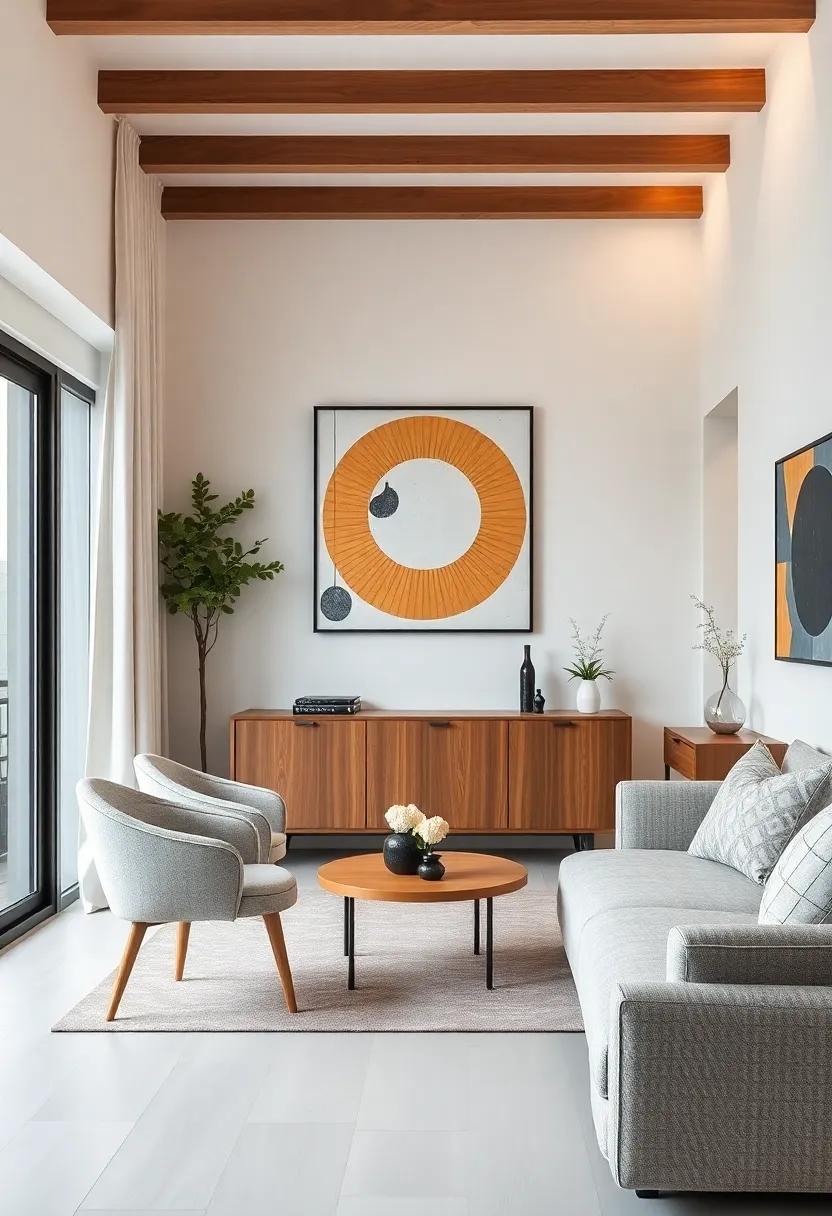
Color has a profound impact on mood and perception, making it essential to select a palette that evokes warmth and comfort in your small living room and dining area. Choosing soft, muted tones can help create an inviting surroundings. Colors like light beige, soft whites, and pale blues can open up the space, making it feel larger while still maintaining a cozy ambiance. Incorporating deeper shades as accents, such as navy or forest green, around the sideboard or in your decor can add depth without overwhelming the area.
To further enhance the inviting atmosphere, consider using a combination of colors that complement each other. Here are some suggestions for color combinations that work well together:
| Primary Color | Accent Colors |
|---|---|
| Soft Beige | muted Olive, Cream |
| Pale Blue | Dusty Rose, Light Gray |
| Warm Taupe | Rich Charcoal, Brass |
| Light Sage | Coral, Soft Brown |
Incorporating these color combinations along with textured fabrics and natural materials will further contribute to a warm, inviting atmosphere. Don’t forget to play with layering—use throw pillows, blankets, and art pieces in your chosen palette to add personality and warmth to your cozy living space.
Transforming Light with Mirrors to Enhance Small Spaces
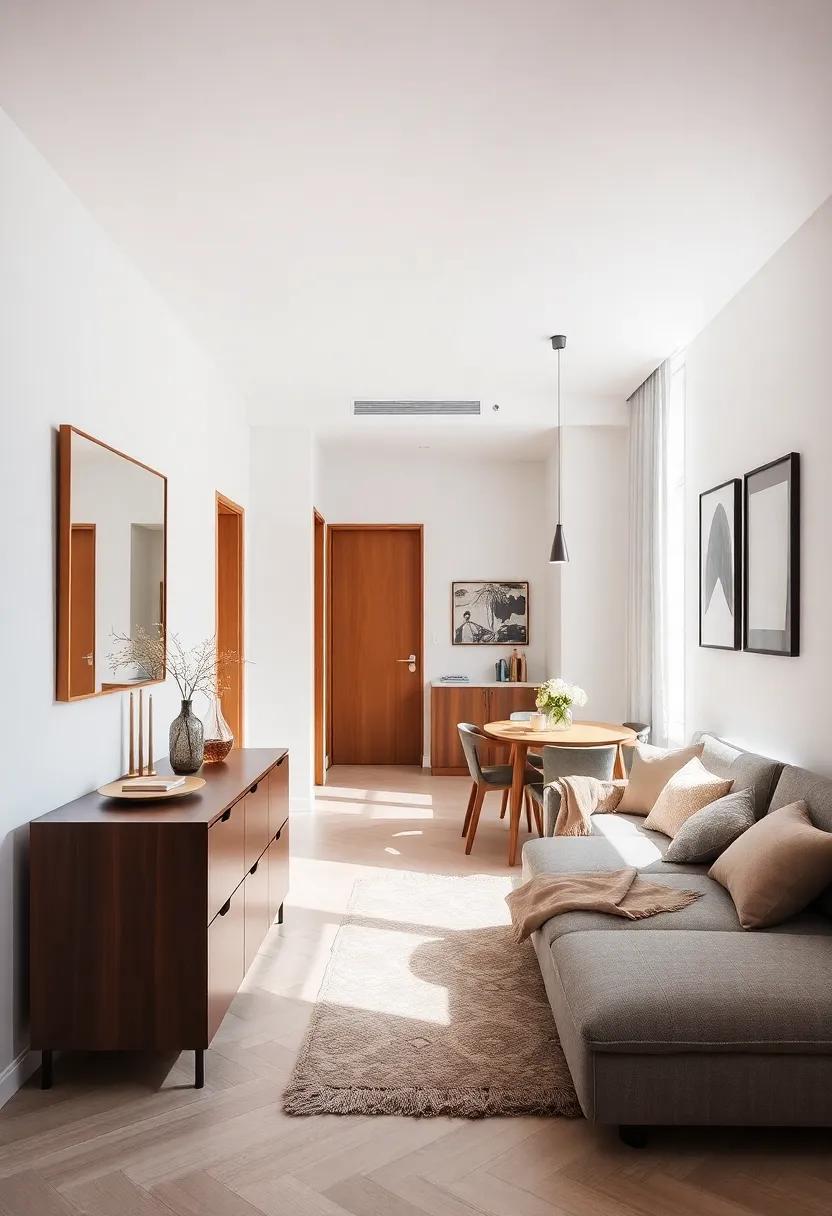
Utilizing mirrors in your small living room can be a game changer. By strategically placing them, you can create the illusion of more space and enhance the overall ambiance. Consider installing a large mirror on one wall to reflect light and make the area feel open and airy. This technique can visually expand your room, giving it a fresh outlook. Additionally, using smaller decorative mirrors in various styles can add depth and interest, maintaining a cohesive aesthetic without overwhelming the space.
To maximize both functionality and style, it’s essential to choose mirrors that complement your design. Here are some tips for selecting and arranging mirrors in your cozy setting:
- Size Matters: Opt for larger mirrors to make a bigger impact.
- Framed or Frameless: Pick frames that match your furniture for a unified look.
- Layering: Combine mirrors with artwork to create a dynamic visual experience.
Consider this simple configuration table to visualize different mirror placements:
| Mirror Type | Placement Area | Effect |
|---|---|---|
| Large Wall Mirror | Opposite Window | Maximizes Natural Light |
| Decorative Accent Mirrors | Sofa Area | Enhances Cozy Vibe |
| Mirrored Sideboard | Dining Area | Creates Elegance |
Selecting Comfortable Seating That Doesn’t compromise Style
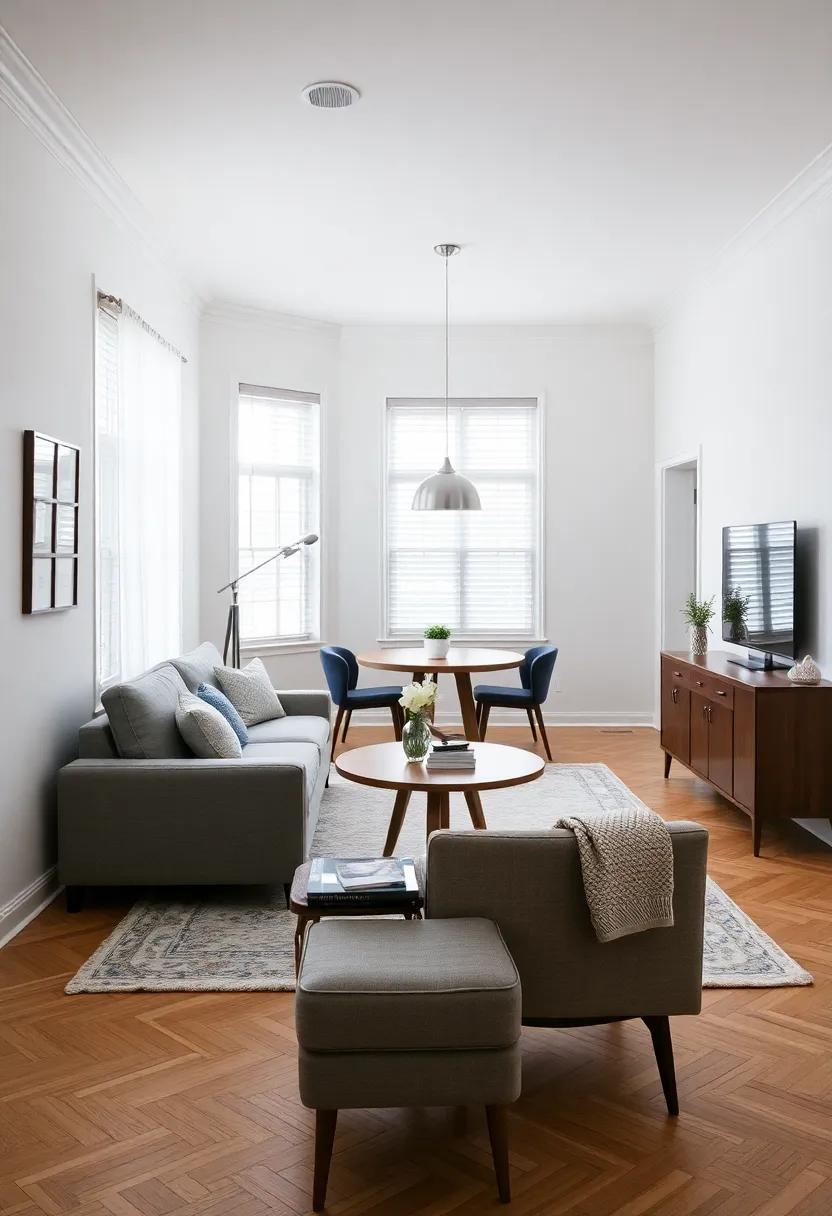
Choosing seating for a small living room that balances comfort and style is an art in itself. Opt for multi-functional pieces that not only serve aesthetic purposes but also enhance usability. Items like compact armchairs, sleek loveseats, and ottomans with storage can create a relaxed atmosphere while ensuring there’s enough room for movement. When selecting fabrics,consider durable materials in rich hues or patterns that can withstand daily wear and add character to your space. Cushions and throws can easily be swapped out to refresh the look without much effort.
To ensure that your seating arrangement complements your dining area and sideboard, think about cohesive styling. You might want to include elements such as:
- Color Coordination: Choose a color palette that unites both seating and dining aesthetics.
- Shared Materials: Opt for upholstery or wood finishes that match your dining chairs or sideboard.
- Scale and Proportion: avoid bulky furniture and focus on elegant silhouettes that won’t overcrowd the space.
Your seating should also consider the layout of the entire room, encouraging flow and conversation while remaining inviting. Finding the right mix will ensure your small living area remains stylish without becoming cramped.
Incorporating Built-In Storage Solutions for a clutter-Free Look
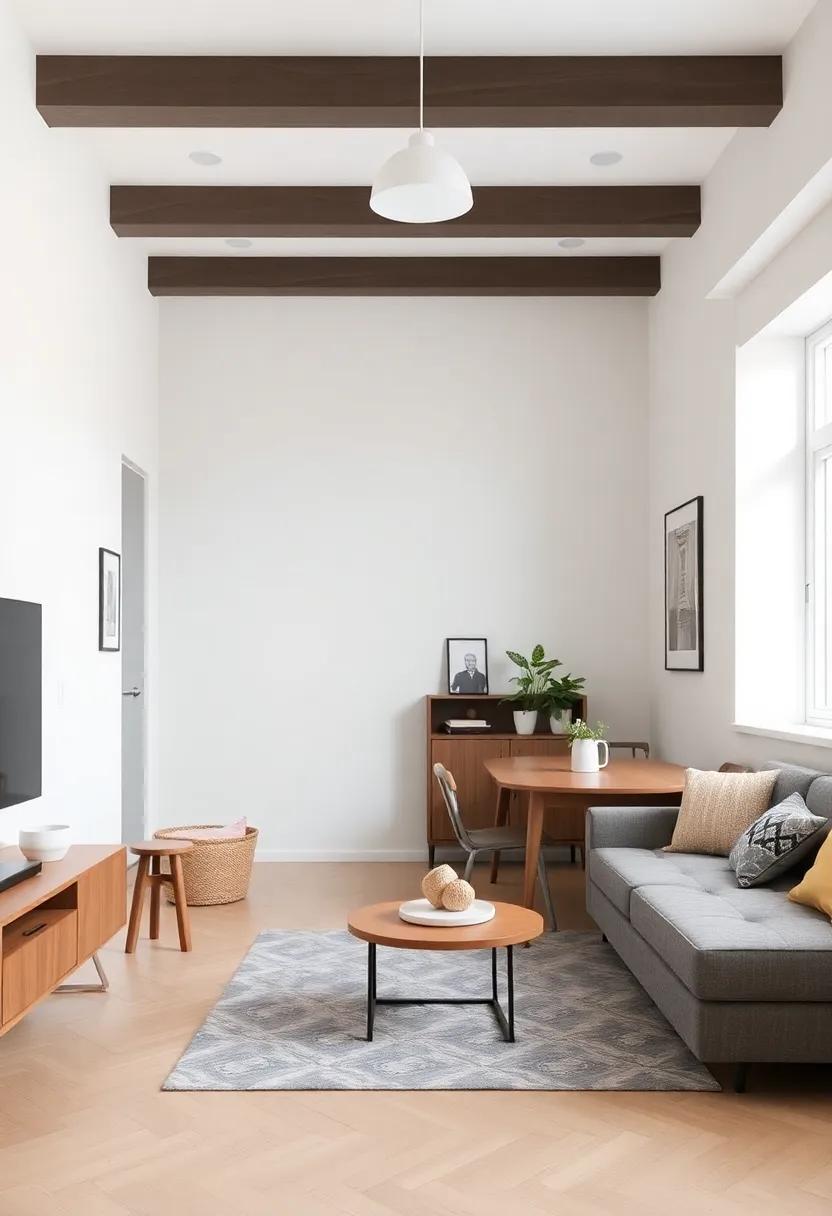
Harnessing the potential of built-in storage solutions not only emphasizes a sleek aesthetic but also enhances functionality in your small living space. Wall-mounted shelves can be artfully arranged to showcase decorative items, books, or even plants, preserving valuable floor space while adding character. Niches and alcoves can be transformed into cozy display areas, creating visual interest without overwhelming the room. Consider integrating storage units that blend seamlessly with existing furniture; for instance, a sideboard that serves as both a dining area storage solution and an elegant serving piece during meals. The key is to ensure each element serves a dual purpose,bringing harmony to both style and organization.
Utilizing multi-functional furniture is another strategy to keep your living area clutter-free. Choose items like ottomans or coffee tables with hidden compartments that can neatly tuck away items such as blankets, magazines, or board games. Here’s a quick look at some versatile built-in storage options:
| Furniture Type | Storage Feature |
|---|---|
| Sideboard | Cabinet space for dinnerware and linens |
| Wall-mounted Shelves | Display decor while storing essentials |
| Coffee Table | hidden drawers for remote controls and coasters |
| Bench Seating | Under-seat storage for seasonal items |
utilizing Area Rugs to Define Your Living and Dining Spaces
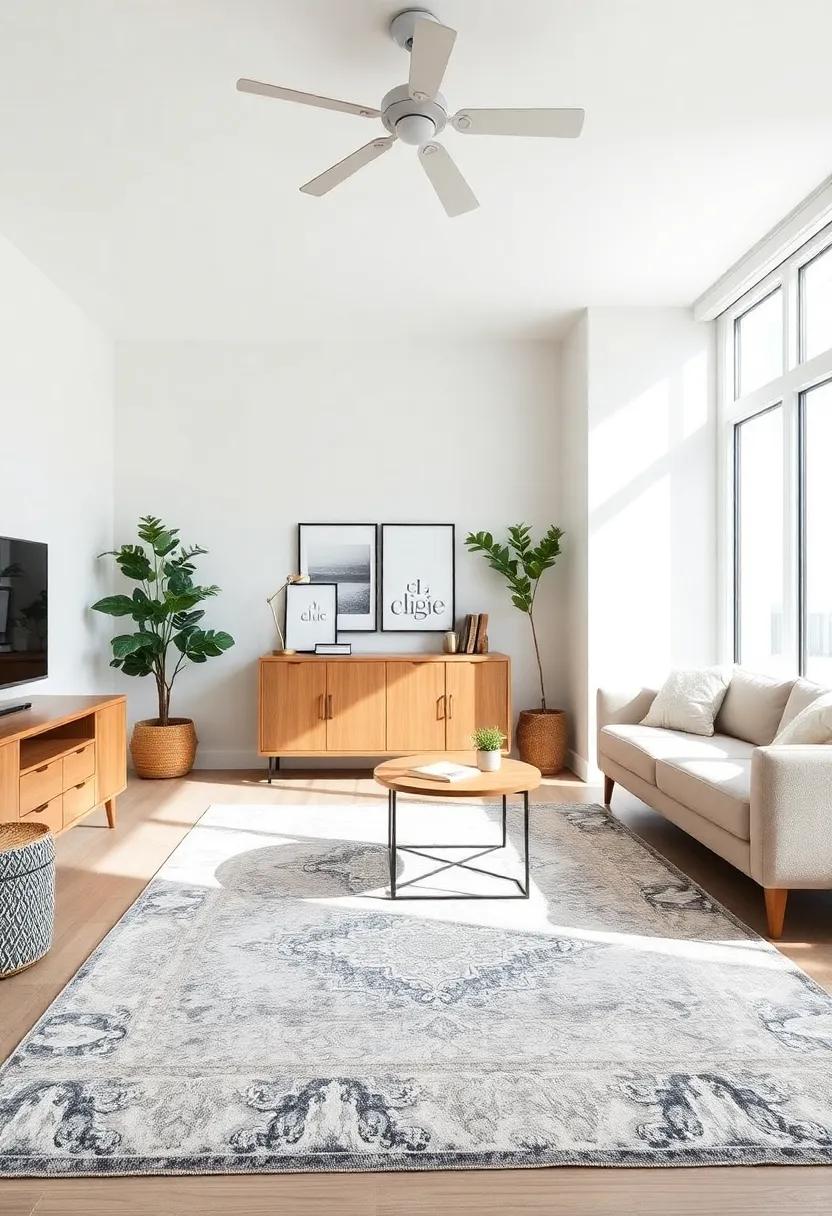
Area rugs serve as an effective tool for creating distinct zones within a small living and dining area. by selecting rugs that complement your color palette and furnishings, you can effortlessly define each space while simultaneously adding warmth and texture. Consider using bold geometric patterns or soft,solid colors that harmonize with your existing decor. For enhanced visual delineation, ensure that the edge of your rug extends beyond the furniture, allowing for a seamless transition between the living space and dining area.
Incorporating layered rugs can further elevate your design, combining smaller accent rugs with larger base rugs to create depth and interest. Pairing a lightweight, colorful rug under your dining table with a neutrally-toned larger area rug can make the dining experience feel cozy and inviting. Experimenting with various textures—like a plush wool rug below the coffee table paired with a flatweave rug under the dining set—will not only provide comfort but also foster a stylish, cohesive look. To ensure that the design remains functional, consider the following tips:
- Balance Sizes: Match rug sizes to the scale of your furniture.
- Coordinate Colors: Choose colors that flow from living to dining spaces.
- Think about Maintenance: Opt for washable materials when possible.
Creating a Cohesive Flow Between Living Area and Dining Space
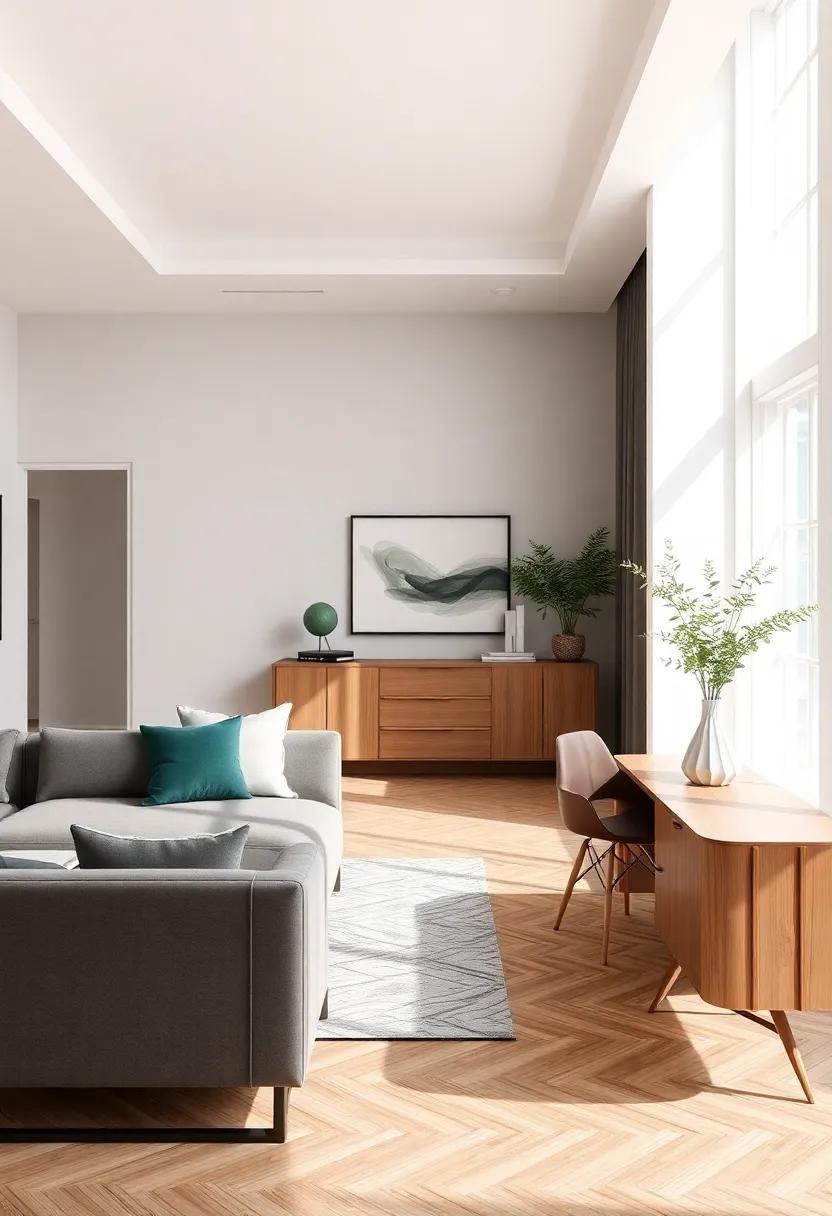
To achieve a harmonious ambiance in a small living room intertwined with a dining space, it’s essential to consider layout and furniture selection carefully. Choose furniture that complements both areas without overwhelming the space; as an example, a sleek, modular sofa can serve as a comfortable sitting area while maintaining a lightweight visual weight. A dining table that doubles as a workspace or a console can save precious square footage while keeping functionality at the forefront. Moreover, utilizing multi-purpose items fosters a seamless transition between the two sections, blurring the lines while enhancing usability.
Color and texture play a crucial role in connecting the living and dining areas. Opt for a cohesive color palette that flows naturally throughout the spaces, reinforcing a sense of unity. Elements such as coordinated upholstery, wall colors, and decorative accents can tie the rooms together visually. To add depth, consider incorporating a variety of textures, such as a soft rug beneath the dining table or framed art that mirrors the patterns found in the living area. Creating a sense of continuity ensures that both spaces feel intimate and inviting, even within the constraints of a smaller setting.
The Art of Layering Lighting for Ambiance and Functionality
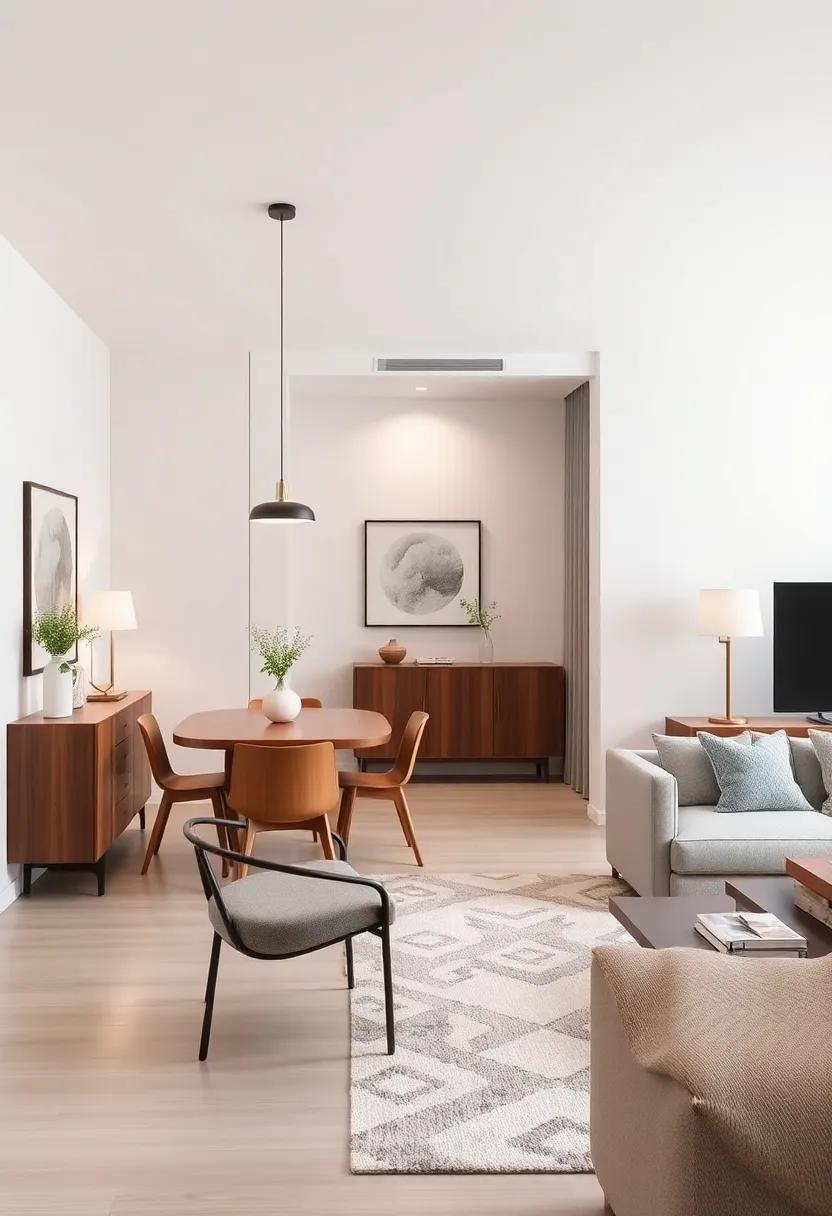
layering lighting effectively can transform a small living room with a dining area into a haven of comfort and style.To create a warm and inviting atmosphere, consider incorporating multiple light sources that serve different purposes. Start with ambient lighting, which provides a general glow to the entire space. This can be achieved using ceiling fixtures or recessed lighting.Next,enhance functionality with task lighting,such as pendant lights over the dining table or a stylish floor lamp next to the sideboard,ensuring that every nook is well-lit for reading or enjoying meals. add accent lighting to highlight artwork or décor, introducing pops of interest that draw the eye and create a cozy vibe.
When selecting your lighting fixtures, consider their placement and height to maximize the small space. Here are some suggestions for harmonious layering:
- Table Lamps: Place on side tables or the sideboard for added warmth.
- Wall Sconces: Install beside seating areas to provide soft light without taking up space.
- Dimmers: Use dimmer switches to adjust brightness according to mood or occasion.
by integrating these elements thoughtfully, your small living room can seamlessly combine ambiance and functionality, creating a delightful area that welcomes both relaxation and social gatherings.
Choosing the Ideal Dining Table for Limited Square Footage
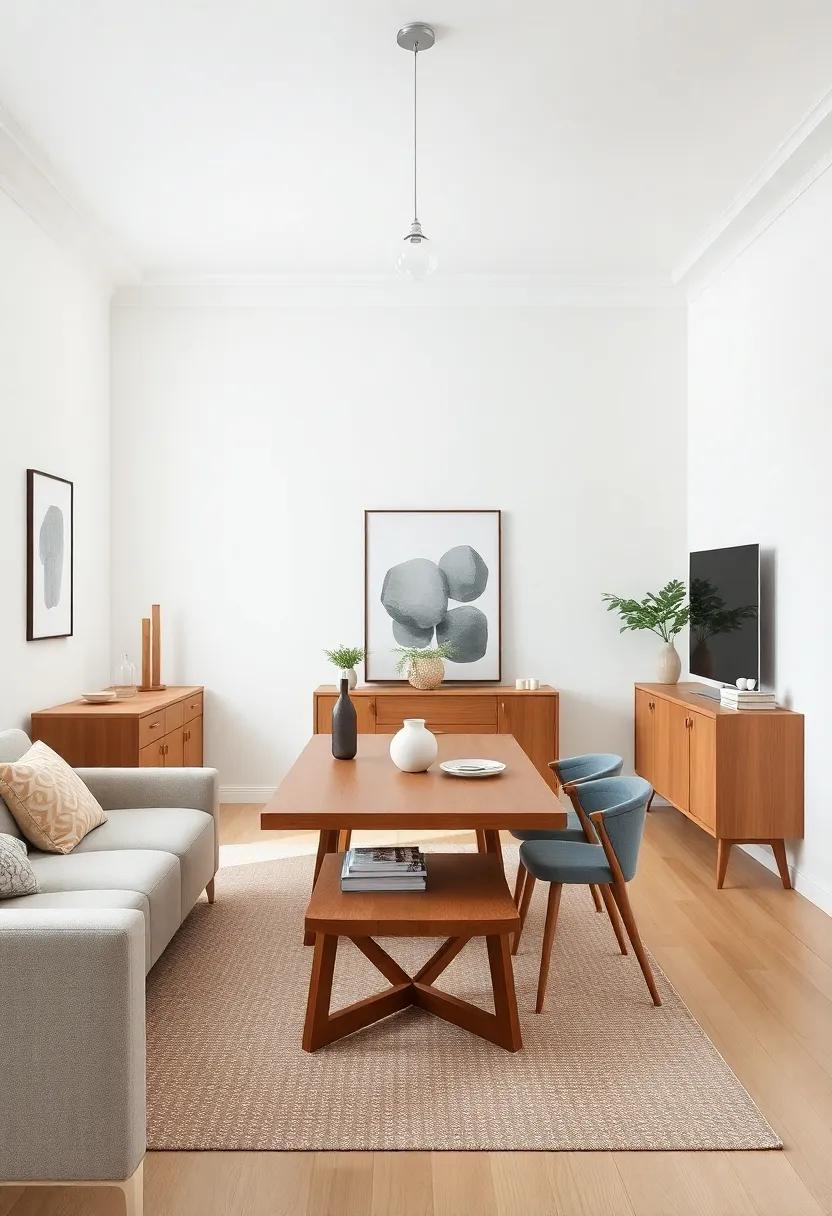
When working with limited square footage, the selection of a dining table becomes a central consideration that can considerably influence the overall functionality of your space. Opt for a round or oval table rather of a rectangular one, as these shapes tend to encourage movement and can fit more naturally into tight corners. Additionally, consider tables with extendable leaves; this versatility allows you to comfortably accommodate guests while reclaiming space when not in use. Look for options that provide storage solutions, such as built-in drawers or shelves beneath the tabletop, to keep dining essentials organized without further cluttering your small living area.
Another noteworthy aspect is the choice of materials and colors. Lighter hues and clear materials like glass can enhance the perception of openness, whereas darker, bulkier tables can make a space feel cramped. Additionally, a multi-functional table, such as one that can also serve as a workspace or a game table, can amplify the utility of your living area. Consider integrating a small, drop-leaf table; it can be folded down when not in use and opened for dining, providing optimum adaptability. Remember to leave sufficient clearance around the table to ensure comfortable movement, ideally targeting a distance of 24 to 36 inches around its perimeter.
Designing a Sideboard That Doubles as Stylish Storage

In a cozy small living room, every piece of furniture can play multiple roles, and a well-designed sideboard offers the perfect blend of form and function. Look for designs that incorporate sleek lines and a color palette that complements your existing decor. Consider options with open shelving for decorative items and closed cabinets to hide away clutter. This allows you to maintain a tidy space while showcasing your personality through curated displays. A sideboard can also serve as a convenient surface for serving during meals or for placing plants and art pieces, amplifying your living space’s aesthetic charm.
When selecting materials and finishes, think about durability and style balance. Here are some ideas to inspire your sideboard design:
- Wood Finishes: Opt for warm wood tones or go for a modern vibe with a matte finish.
- Metal Accents: Incorporate metal hardware or legs for a touch of sophistication.
- Textured Elements: Consider woven or upholstered panels to add softness and warmth.
Additionally, make use of smart storage solutions within your sideboard:
| Storage Type | Purpose |
|---|---|
| Drawers | Perfect for cutlery and linens. |
| Cubbies | Ideal for books or games. |
| Glass Doors | Showcase gorgeous dishware or collectibles. |
Incorporating Greenery to Bring life into Your Small Space
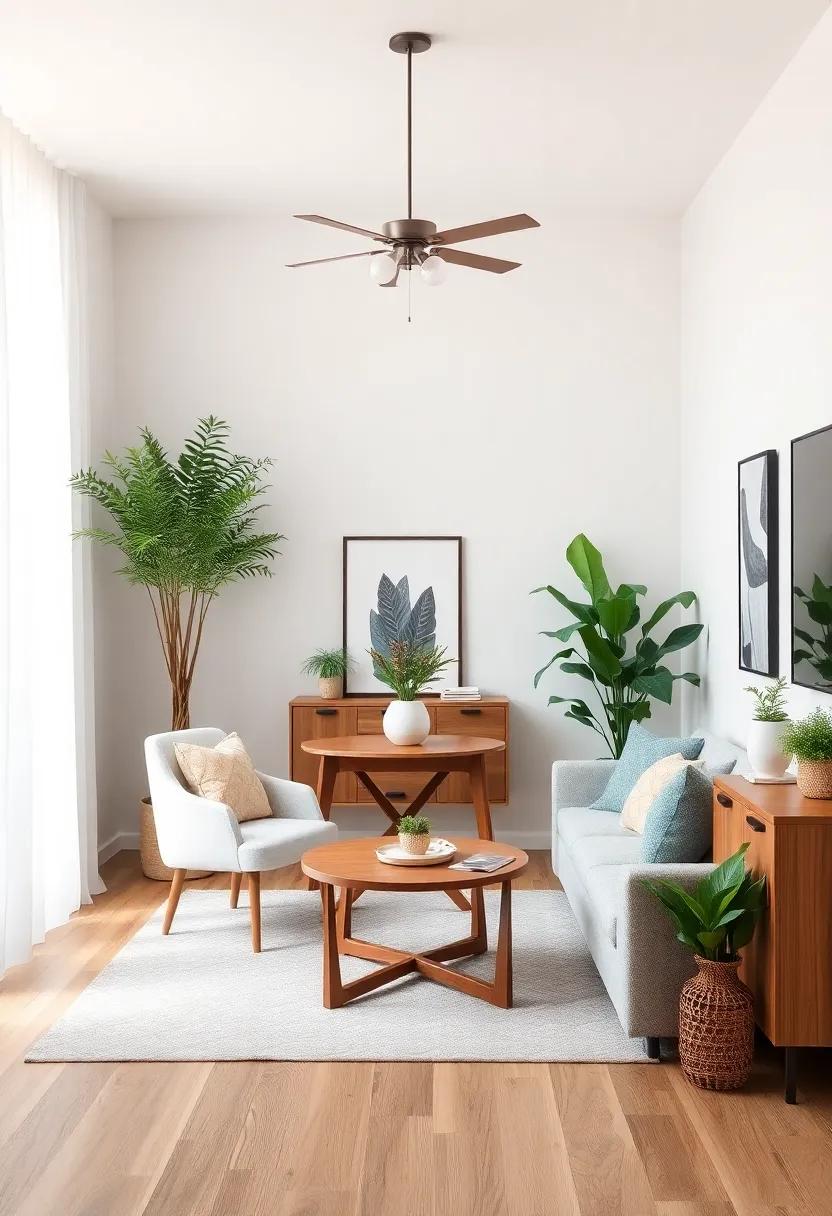
Integrating greenery into your compact living space not only enhances its visual appeal but also fosters a sense of tranquility. Consider adding small potted plants on your sideboard or open shelves to create layers of texture and color. You might choose from low-maintenance options such as:
- Succulents – Perfect for sunny spots.
- Snake plants - great air purifiers that thrive in various light conditions.
- Pothos – Their trailing vines can add a lovely flow.
Each of these choices requires minimal care, making them perfect companions for a dynamic yet cozy environment.
Vertical space is your friend when it comes to ensuring that your greenery doesn’t overcrowd the room.Use wall-mounted planters or tiered plant stands to create an unexpected focal point without consuming precious floor space.Moreover, grouping plants of varying heights and textures in different areas can establish a cohesive look. To further enhance this natural vibe, consider setting up a small herb garden in a sunny corner of your dining area.Here’s a simple table that outlines some herbs that thrive well indoors:
| Herb | Light Requirements | watering Frequency |
|---|---|---|
| Basil | Luminous, indirect sunlight | Once a week |
| Mint | Partial shade | Twice a week |
| Chives | Full sunlight | Once a week |
This array of greenery not only purifies the air but also allows you to enjoy fresh herbs in your culinary creations, adding functionality to beauty.
Personalizing Your Space with Thoughtful Accessories and Decor

When it comes to transforming a small living room with a dining area, the right accessories and decor can turn a functional space into a personal haven. Thoughtfully selected pieces reflect your personality and contribute to the overall ambiance. Consider incorporating hanging plants or shelves to bring life to your walls while maximizing vertical space, allowing the floor to remain open for movement. Unique art prints or framed photographs can also add a layer of warmth and character to the room, making it feel distinctly yours.
additionally, integrating a sideboard into the dining setup not only offers practical storage but can also serve as a decorative focal point. dress it with a few curated decor elements such as candles, vases, or a small table lamp to enhance its visual appeal. To maintain an inviting atmosphere, opts for a color palette that complements the size of the room—lighter hues can make the space feel airier while still allowing for the boldness of prints in your accessories. Here are some accessories you might consider:
- Textured throw pillows
- Silk or cotton curtains
- Stylish coasters
- Fragrant candles
- Colorful tableware
Optimizing Arrangement for social Interaction and Comfort
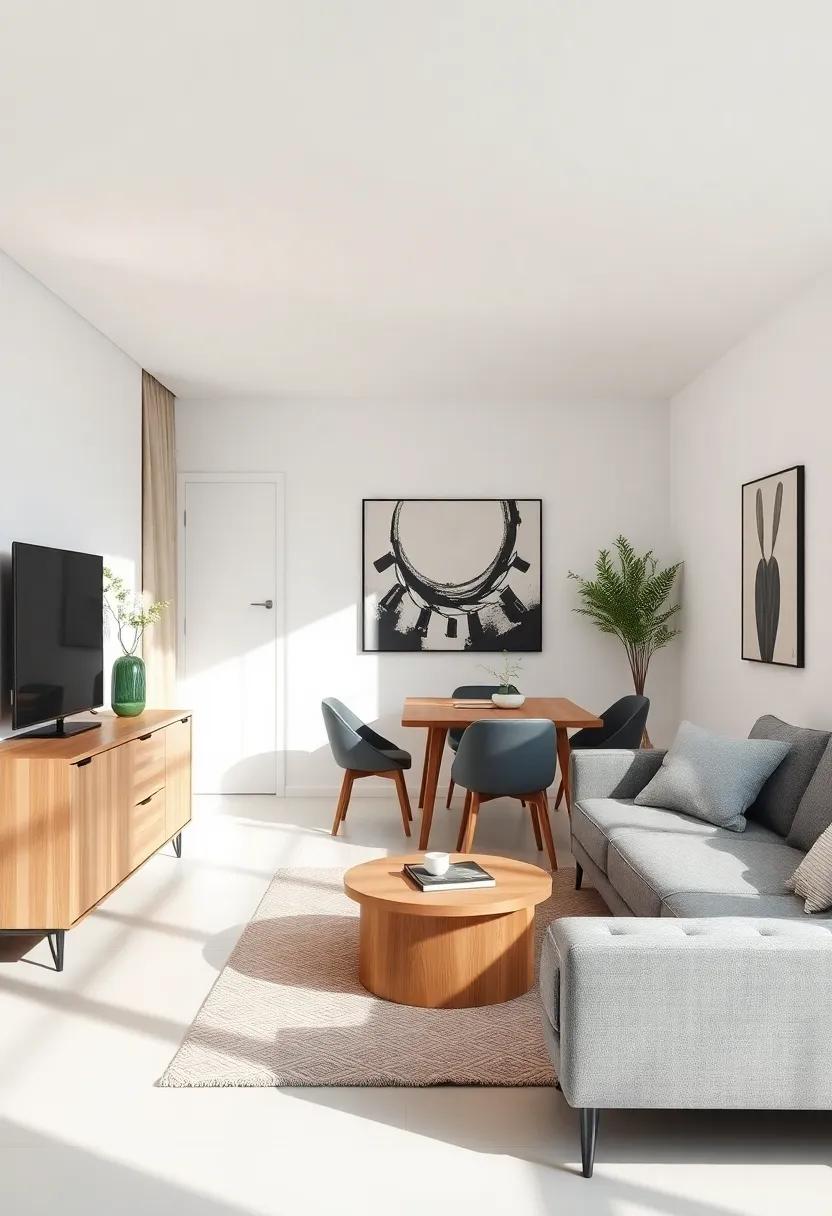
Creating a space that fosters social interaction and enhances comfort is essential in a cozy small living room. To achieve this,consider arranging furniture to encourage conversation and connection. Placing seating in a U-shape or semi-circle can invite interaction, making guests feel more included and comfortable. Additionally, choose soft fabrics and cozy cushions for your seating to enhance relaxation. It’s also beneficial to incorporate small side tables within easy reach to allow guests to comfortably set down drinks or snacks, further promoting a welcoming atmosphere.
Lighting plays a vital role in setting the mood, so opt for multi-layered lighting solutions. Use a combination of overhead fixtures, floor lamps, and table lamps to create varying levels of illumination throughout the space.to visually differentiate the dining area from the living room,consider using a stylish area rug under the dining table,complemented by appropriate lighting,such as a striking pendant light.This intentional zoning of spaces helps to cultivate distinct yet interconnected areas that can accommodate both intimate gatherings and lively meals. Below is a simple table visualizing different lighting options:
| Lighting type | Function | Aesthetic Qualities |
|---|---|---|
| Overhead fixtures | General lighting for the room | Bold and eye-catching |
| Floor Lamps | Directional lighting for reading | Cozy and stylish |
| Table Lamps | Task lighting for side tables | Warm and inviting |
Exploring Foldable Furniture For Dynamic Living Solutions

In the realm of small living spaces, foldable furniture emerges as a transformative solution, seamlessly blending functionality with style. Imagine a compact dining table that expands for entertaining and folds down when not in use, or a versatile sofa bed that effortlessly transitions from day to night. These innovative pieces not only save space but also enhance the aesthetic appeal of your living area.Consider incorporating the following elements to maximize your small living room:
- Convertible sofas that adapt to your needs, providing seating by day and a guest bed by night.
- Drop-leaf tables that can adjust in size, allowing seamless transitions from everyday meals to larger gatherings.
- Wall-mounted shelves that offer storage solutions without taking up precious floor space.
When designing your cozy retreat, think about the arrangement of these dynamic pieces to create a flow that feels both open and inviting. A sideboard can serve as a stylish storage option while doubling as a buffet during gatherings. Below is a handy table summarizing ideal foldable furniture styles:
| Furniture Type | Functionality | Style |
|---|---|---|
| Folding Dining Table | Expands for meals, folds for easy storage | Modern, Rustic, Minimalist |
| Sofa Bed | Provides seating and sleeping space | Chic, Versatile, Comfortable |
| Marble Display Sideboard | Storage and serving capability | Elegant, Timeless, Luxurious |
Maximizing Natural Light for a Brighter Atmosphere
Embracing natural light can transform a small living room into a warm and inviting space. Start by using light-colored walls to reflect sunlight, creating an illusion of a more expansive room. Consider strategically placing mirrors across windows to bounce light around the space, giving the area a more open feel. Sheer curtains are another great option; they allow ample sunlight to filter through while providing a soft,airy ambiance,perfectly complementing the cozy aesthetic.
incorporating elements that enhance brightness can further elevate the atmosphere. Opt for multi-functional furniture that incorporates reflective surfaces, such as a glass-top side table or a light-hued sideboard. Additionally, take care to position your dining area near windows, maximizing natural illumination during meal times. You might find it beneficial to include plants that thrive in indirect sunlight, as they not only offer a touch of nature but also contribute to a lively, fresh vibe throughout your cozy living room.
Integrating Unique Wall Art to Reflect Your Personality
Transform your small living area into a canvas that echoes your vibe by integrating unique wall art. Art has the power to define a space, not just in aesthetic value but also in the emotional resonance it elicits. Choose pieces that embody your personality, whether they’re bold abstracts, serene landscapes, or eclectic mixed-media works.Gallery walls are a popular option that allows for a variety of styles, colors, and textures that can adapt as your tastes evolve. Use the following tips to make your art stand out:
- Use oversized pieces: A large artwork can make a dramatic statement and serve as a focal point.
- Consider color harmony: Pick art that complements your color scheme or introduces a subtle contrast for depth.
- Mix frames and textures: A mash-up of frames can give your wall a dynamic, layered look that invites exploration.
In addition to wall art, consider utilizing shelving or ledges to display smaller art pieces and decorative items. This not only adds vertical interest but also keeps essential floor space clear. Incorporating art from local artists or your own creations can add a personal touch that other decor simply cannot provide. To further enhance your theme, a small strip of LED lighting can subtly illuminate your collection, inviting admiration without overwhelming the space. Below is a simple guide to help you choose art that reflects who you are:
| art Style | Personality Trait |
|---|---|
| Abstract | Adventurous |
| Figurative | Emotional |
| Minimalist | Calm |
| Nature-Inspired | Earthy |
Curating a Cozy Nook for Relaxation and Unwinding
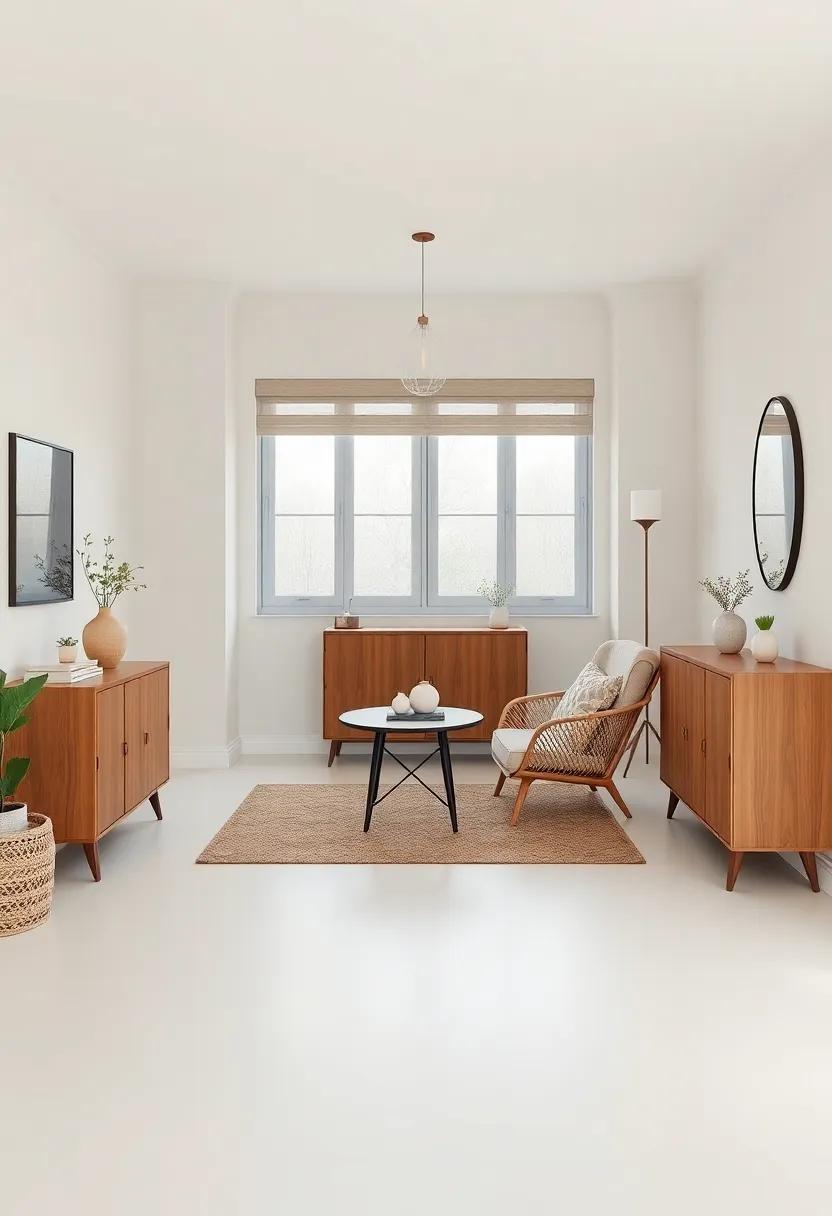
To truly embrace relaxation in your small living room, start by selecting a comfortable armchair or a plush loveseat that invites you to sink in and unwind. Layer your seating area with a mixture of soft cushions and a cozy throw blanket to enhance the inviting atmosphere. Consider adding an area rug to define the space,providing warmth underfoot and a touch of style. Use a combination of natural light and soft lighting such as floor lamps or string lights to create an ambiance that’s perfect for evening relaxation or afternoon reading sessions.
In terms of décor, keep it simple yet personal. Incorporate elements such as a small bookshelf for your favorite reads or a side table where you can place a cup of tea or coffee. Plants add life and vibrancy,while strategically placed art pieces or photographs can personalize your cozy nook. To maintain an organized look, utilize your sideboard not only for dining essentials but also as a display space for your favorite decorative items, creating an environment that multi-tasks beautifully for both relaxation and entertaining. Below, a simple table summarizes essential elements for your cozy nook:
| Element | Purpose |
|---|---|
| Comfortable seating | Encourages relaxation and comfort |
| Soft lighting | Creates a warm and inviting atmosphere |
| Personal decorations | Reflects your style and personality |
| Indoor plants | Adds vibrancy and improves air quality |
balancing Aesthetics and Functionality in Small Space Design
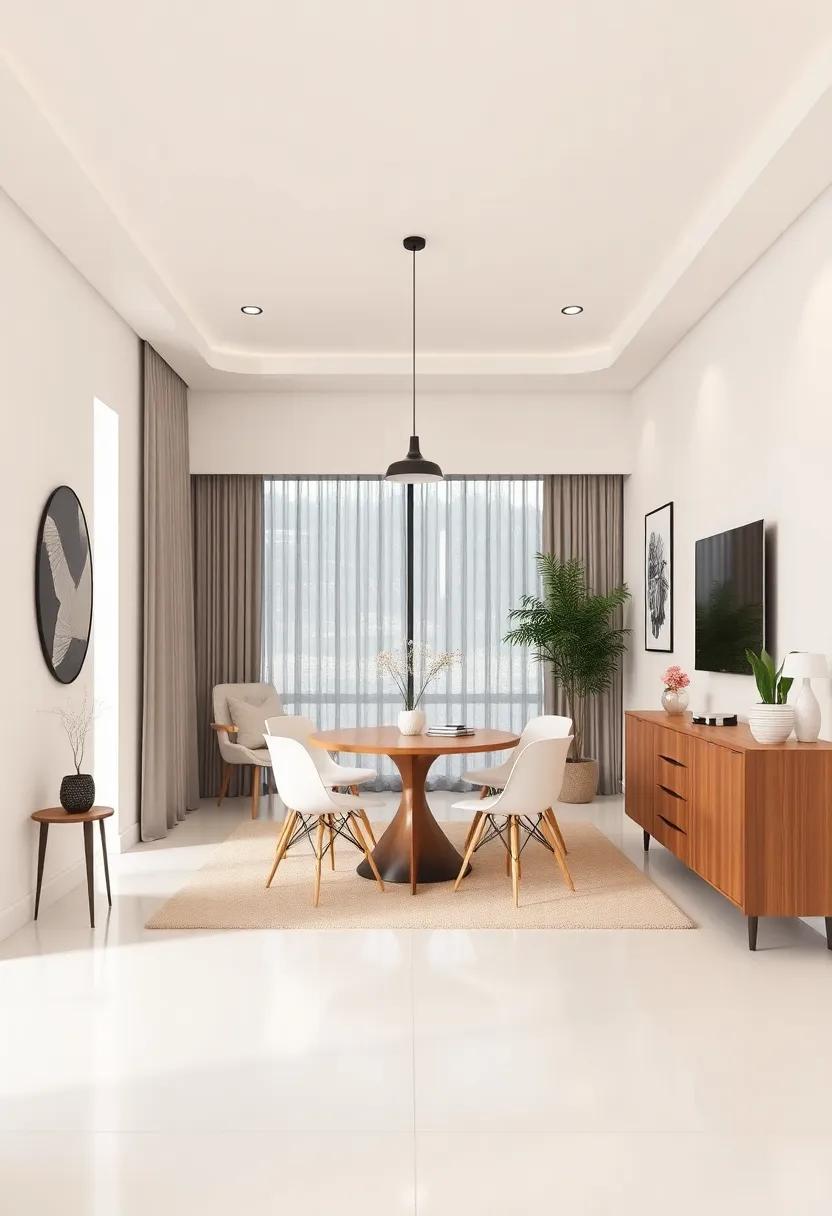
When designing a small living room that also doubles as a dining area, the key is to find a harmonious blend of style and practicality. Utilizing multifunctional furniture can dramatically enhance the space without compromising on visual appeal. Consider incorporating a foldable dining table that can expand during gatherings and neatly tuck away when not in use. Opt for slim-profile seating options that invite relaxation without overwhelming the room—think sleek chairs or a compact loveseat that fits snugly against a wall. Additionally, a stylish sideboard can serve dual purposes as both storage and a display area, showcasing decorative items such as plants or artwork, which breathe life into a compact space.
Another effective strategy is to employ color and lighting to create an inviting atmosphere.Light, neutral shades can visually open up the room, while strategic use of mirrors can amplify natural light and provide a sense of expansiveness. Consider layering your lighting, incorporating ambient options like wall sconces or floor lamps alongside practical task lighting, such as pendant lights above the dining area. To enhance your aesthetic appeal, try mixing materials—wooden accents paired with metallic finishes can add depth and character. Here’s a quick guide to help you choose the right elements:
| Element | Functionality | Aesthetic Benefit |
|---|---|---|
| foldable Dining Table | Space-saving | Chic design |
| Compact Loveseat | Comfortable seating | elegant silhouette |
| Sideboard | Storage solution | Decorative display |
the Conclusion
As we wrap up our exploration of maximizing space in a cozy small living room that seamlessly integrates a dining area and sideboard, it’s essential to remember that every square foot counts when it comes to design. the right furniture choices, strategic layout, and thoughtful decor can transform even the tiniest of spaces into a welcoming haven where comfort meets functionality. By prioritizing multifunctional pieces and embracing a minimalist approach, you can create an atmosphere that invites connection, relaxation, and culinary enjoyment.
your small living room is more than just a space; it’s a canvas for your lifestyle,reflecting your personality and tastes. So, whether you’re hosting a dinner party, curling up with a good book, or gathering with loved ones, let your design choices reflect the magic of togetherness within the warmth of your cozy retreat. Remember, in the world of interior design, creativity knows no bounds—even in the most compact of rooms. Happy decorating!
As an Amazon Associate I earn from qualifying purchases.


